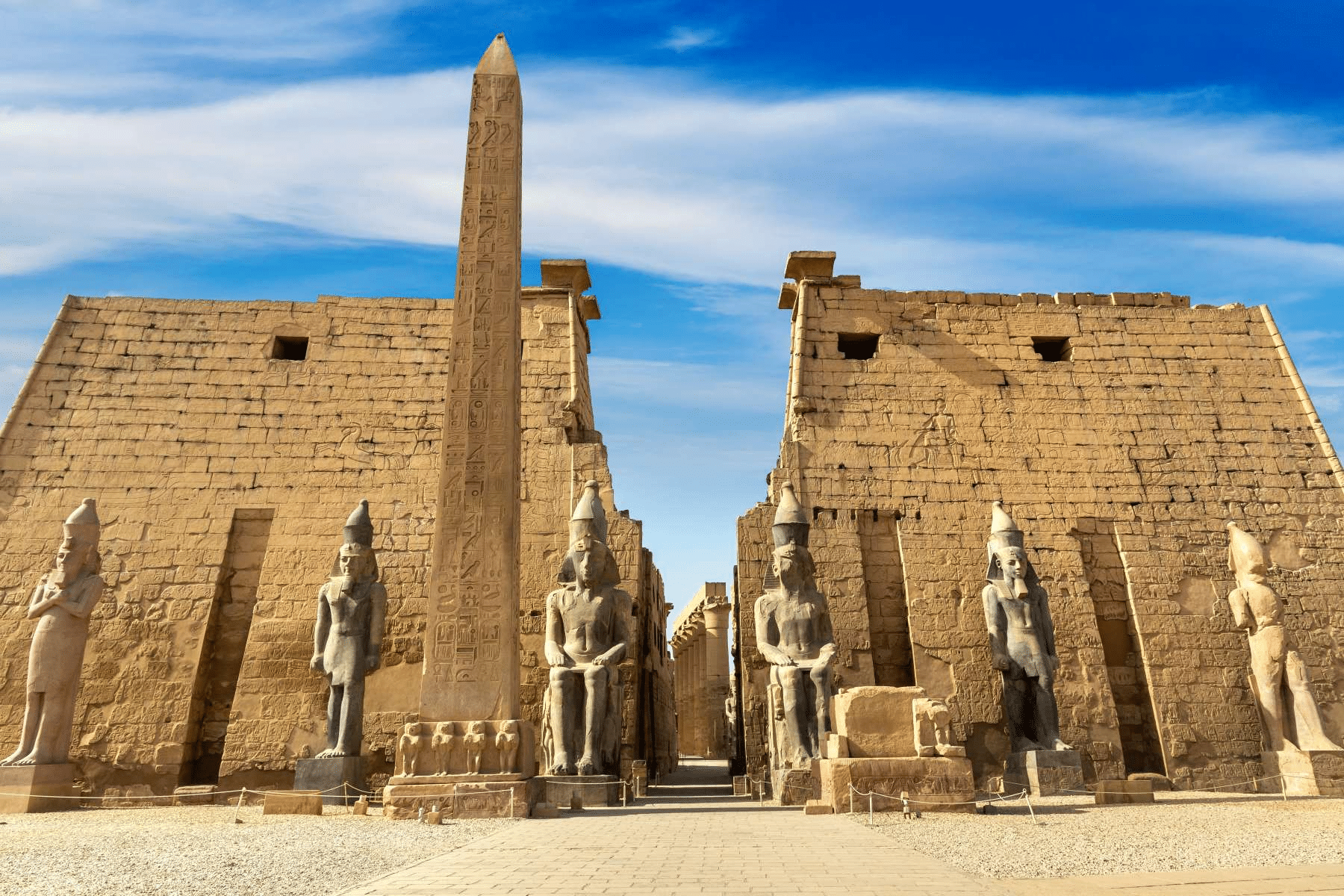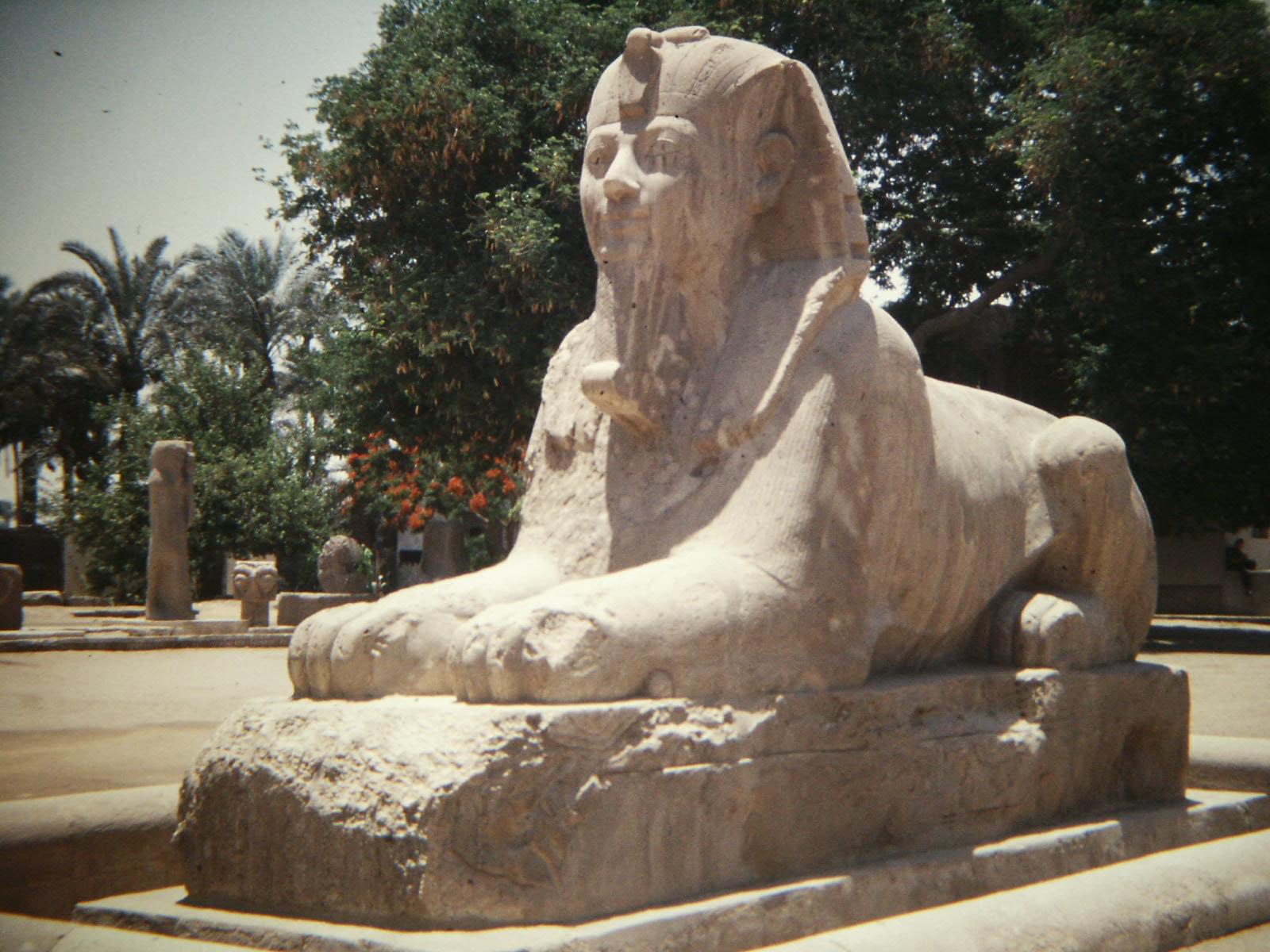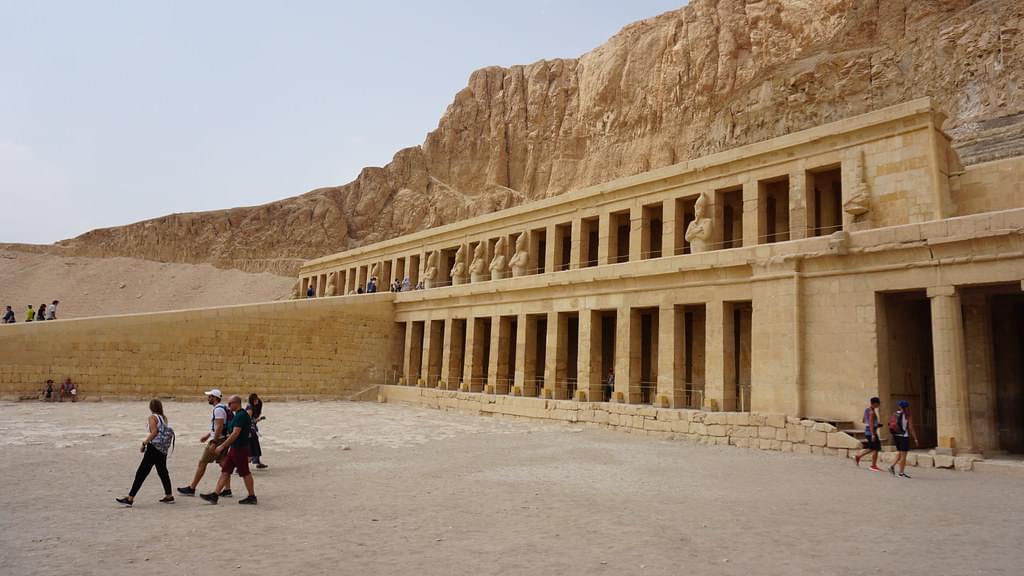About Luxor Temple
Located on the east bank of the Nile River in Egypt, Luxor Temple is a stunning example of ancient Egyptian architecture and religious significance. Built around 1400 BCE during the New Kingdom period, it was dedicated primarily to the triad of gods Amun, Mut, and Khonsu. Over centuries, successive pharaohs added to its splendor, resulting in a complex that encompasses various structures, including massive pylons, colossal statues, courtyards, and hypostyle halls adorned with intricate hieroglyphs and carvings.
Beyond its architectural grandeur, Luxor Temple played a crucial role in religious rituals and festivals, serving as a center for worship, pilgrimage, and royal ceremonies. It was believed to be a dwelling place for the gods, where they could commune with humanity and bestow blessings upon the kingdom.
Today, Luxor Temple stands as a UNESCO World Heritage Site, drawing visitors from around the globe to marvel at its beauty and unravel the mysteries of ancient Egypt. Its well-preserved ruins offer a glimpse into the spiritual and cultural life of one of the world's most enduring civilizations, making it a must-see destination for history enthusiasts and travelers alike.



